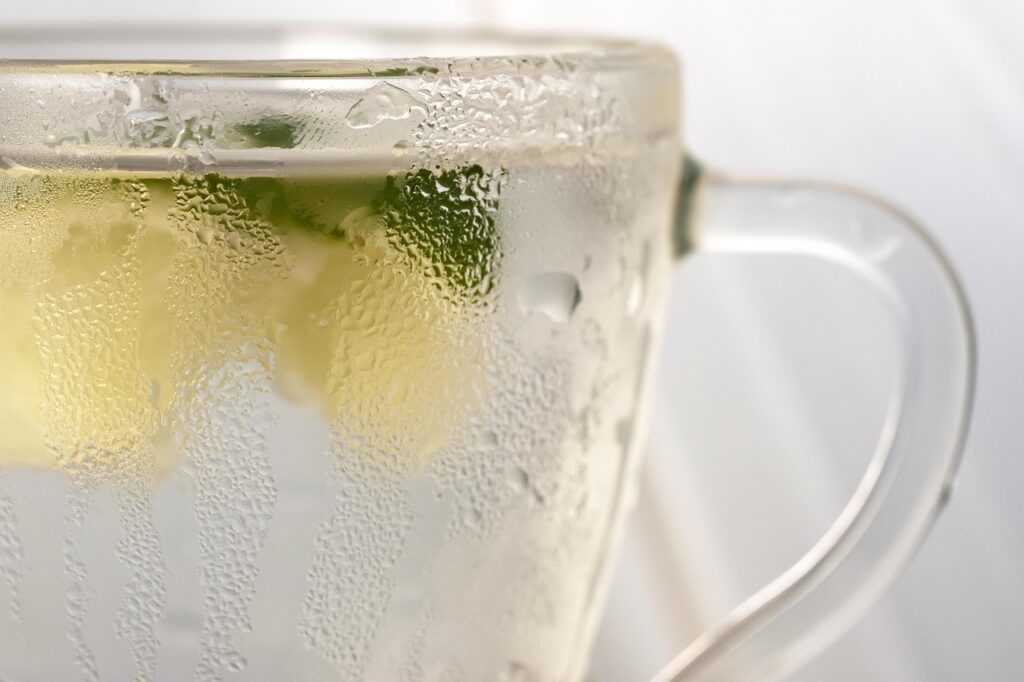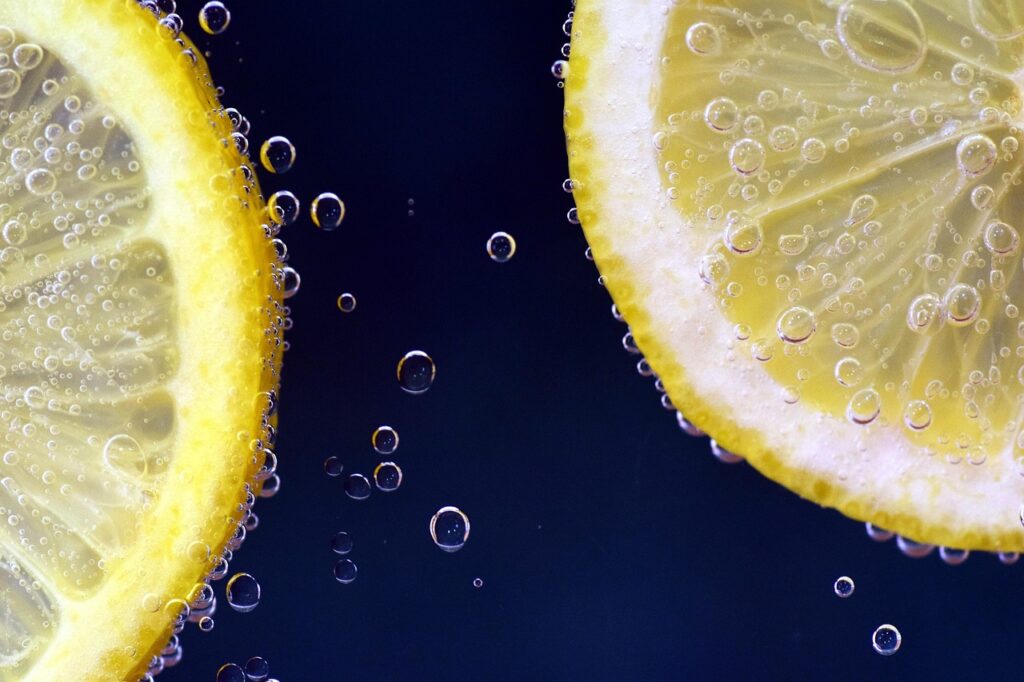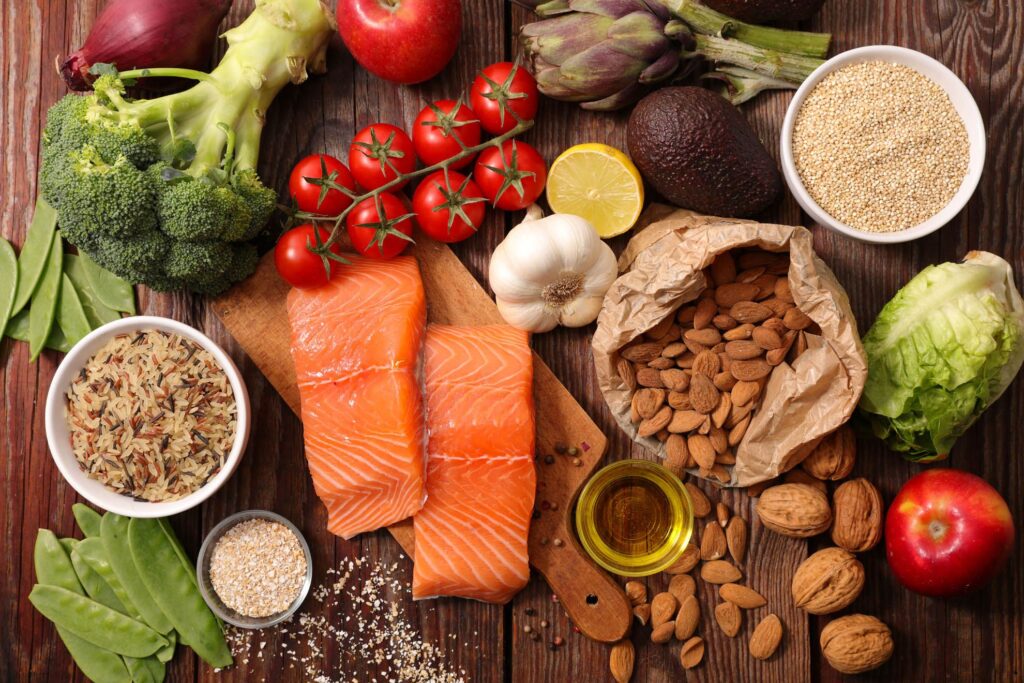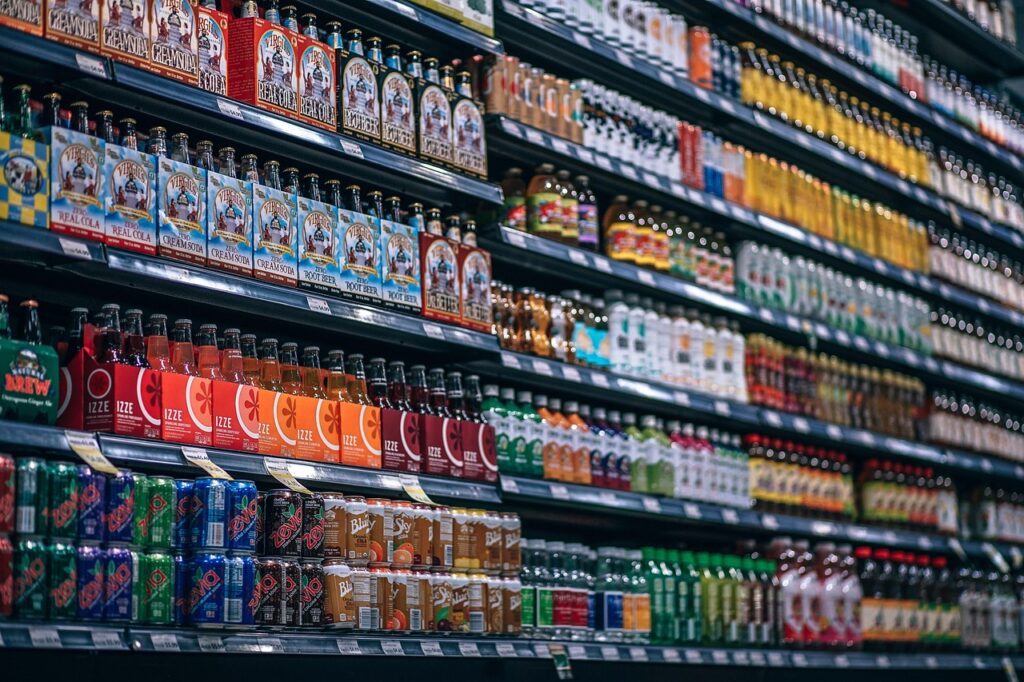
The pursuit of optimal health and peak physical performance often leads us to meticulously examine every aspect of our diet, including our hydration strategies, especially before and after workouts. Proper hydration and the intelligent replenishment of electrolytes are undeniably crucial, particularly for individuals engaged in consistent physical activity or those experiencing dehydration. Electrolytes are essential minerals such as sodium, potassium, magnesium, phosphate, and calcium. When dissolved in the body’s fluids, they carry an electric charge vital for maintaining fluid balance, supporting nerve and muscle function, and regulating critical pH levels and chemical reactions throughout the body.
However, navigating the crowded sports drink aisle can feel like a labyrinth of marketing claims and appealing packaging. While the core intention behind these beverages—to fortify our bodies with essential minerals—is sound, the reality is that not all electrolyte drinks are created with health as their paramount concern. In fact, a significant number of popular options available on store shelves can actively detract from your health and undermine your efforts to stay well hydrated and perform at your best.
This distinction between genuinely supportive hydration and misleading marketing is more critical now than ever. Statistics from Future Market Insights indicate that the average American consumes approximately two cups of sports drinks daily. It is imperative to understand which beverages genuinely contribute to our well-being and which ones are best left on the shelf. This comprehensive article, informed by the expertise of registered dietitians and backed by scientific research, will critically examine some of the most concerning post-workout electrolyte drinks, equipping you with vital knowledge to make smarter, healthier choices.
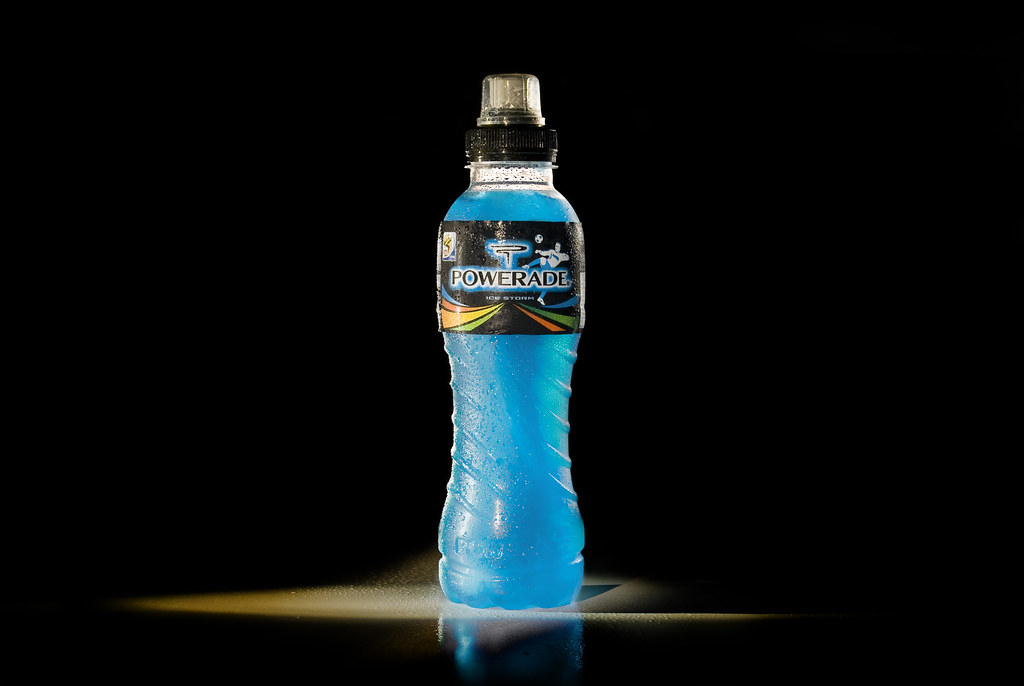
1. **Powerade**Powerade has long been a ubiquitous presence on sports fields and in gym bags, marketed aggressively as a quick and effective source of fuel for endurance workouts. While it undeniably offers simple carbohydrates designed to provide rapid energy, the specific type of sugar employed in its classic beverages, high fructose corn syrup (HFCS), is a major point of concern. This highly processed sweetener harbors significant potential for negative health impacts that extend beyond simple calorie intake.
The human body’s evolutionary design is ill-equipped to handle the copious amounts of fructose delivered by modern processed foods. As explained by Thomas Magee, Senior Director at Pfizer’s Internal Medicine Research Unit, historically, fructose was a rare treat. It served as a critical energy reserve when food was scarce. Our bodies simply have not evolved to manage the “constant onslaught” of HFCS prevalent in contemporary “first-world diets,” leading to metabolic stress.
This persistent exposure to high fructose corn syrup can have profound and often insidious effects on metabolic health, even in individuals who appear physically fit. An article featured in *Current Hypertension Reports* explicitly states that HFCS has the capacity to damage your metabolism independently of increasing your Body Mass Index (BMI). This metabolic disruption can pave the way for serious health conditions like hypertension and prediabetes. Ultimately, a healthy metabolism supports athletic function, making Powerade a hindrance, not a help.
Therefore, despite its reputation as a sports beverage, Powerade’s reliance on HFCS means that while you might feel a temporary energy surge, you could be hindering your long-term athletic ability and metabolic health. It’s a stark reminder that not all calories or carbohydrates are created equal. Prioritizing clean fuel sources is paramount for genuine performance and recovery.
Read more about: Where Did They Go? 15 Beloved Snacks That Vanished From Supermarket Shelves – And The Delicious Memories They Left Behind
2. **Gatorade**Gatorade holds an almost mythical status in the realm of sports drinks, dominating approximately 75% of the U.S. market, according to Future Market Insight. Its immense popularity and marketing as “The proven classic” often create a perception of unquestionable health benefits. The brand boldly claims its original beverage is “the most scientifically researched and game-tested way to replace electrolytes lost in sweat,” an assertion that needs closer scrutiny, particularly concerning its added sugars and artificial ingredients.
While the electrolytes themselves in Gatorade are not the primary issue, the significant quantities of added sugar and artificial dyes are a different story altogether. A standard 20-ounce bottle of Gatorade contains 148 calories, composed entirely of sugar. For someone engaged in intense, prolonged physical activity, these calories might be utilized effectively. However, for individuals with a more sedentary lifestyle, this substantial sugar load can contribute to adverse health outcomes, outweighing any perceived benefits.
The vibrant, often artificial colors that make Gatorade so visually appealing are another concern. Take, for instance, the Lemon Lime variety, which contains Yellow 5. Research published in *Anticancer Research* has revealed that this particular dye is capable of damaging white blood cells and DNA, potentially leading to cellular mutations over time. These findings are deeply troubling, highlighting the non-nutritional and potentially carcinogenic nature of such synthetic additives.
Moreover, a study highlighted in *Public Health Nutrition* drew a compelling link between the consumption of sports drinks by young adults and a higher propensity for drinking other sugary beverages and increased engagement in video gaming. This correlation suggests that regular consumption of drinks like Gatorade might not only contribute to individual health issues but could also be associated with broader unhealthy lifestyle patterns. Choosing less sugary electrolyte sources becomes an evident necessity for holistic wellness.
Read more about: Are You That Driver? Unmasking the 12 Road Trip No-Nos That Annoy Passengers and Police Alike.

3. **Pedialyte**Pedialyte is widely recognized and frequently recommended as a reliable solution for rehydration, particularly in instances of illness such as stomach flu or food poisoning. Its formulation boasts a commendable balance of essential electrolytes, including potassium, zinc, chloride, and sodium, which are critical for restoring health and fluid balance. However, the path to Pedialyte’s “kid-approved taste” is paved with a trio of sweeteners—dextrose, sucralose, and acesulfame potassium—that introduce several health caveats.
The combination of three distinct sweeteners, even with two being calorie-free, suggests an aggressive approach to palatability that might override health considerations. While dextrose is a simple sugar, sucralose and acesulfame potassium are artificial sweeteners, and their long-term effects are increasingly under scientific scrutiny. Emerging research, primarily from animal studies, raises significant questions about their safety, particularly for frequent consumption.
For example, a study published in *Nutrients* demonstrated that acesulfame-K, one of Pedialyte’s sweeteners, was observed to increase the fat content within the liver in experimental subjects. Furthermore, another study, featured in *PLuS ONE*, established a correlation between acesulfame-K consumption and both gut disturbances and undesirable weight gain. While most of this research has been conducted on mice, the potential for similar physiological effects in humans cannot be easily dismissed.
Given these findings, relying on Pedialyte as a regular hydration source, particularly for children, warrants a more cautious approach than its common use might suggest. While its utility for rapid rehydration during severe illness is acknowledged, its sweetener profile indicates that it is far from an ideal daily beverage. Individuals seeking routine electrolyte replenishment should consider more natural, less chemically altered alternatives to safeguard long-term health.
Read more about: Can’t Stop, Won’t Stop (But Tonight We Will!): 13 Salty Snacks We’re *Totally* Not Eating
4. **Body Armor**Body Armor has carved out a niche for itself by marketing a sports drink that appears to be a healthier step up from its more sugar-laden counterparts. Its formulation includes coconut water, which is naturally abundant in electrolytes, and the brand makes a point of avoiding artificial ingredients, a significant improvement over many conventional sports beverages. The addition of essential vitamins such as A, C, E, and various B vitamins further enhances its appeal as a nutritionally conscious choice for active individuals.
Despite these positive attributes, a critical examination of Body Armor’s ingredient list reveals a notable presence of added cane sugar. While cane sugar is often presented as a “healthier” or “natural” sugar option, biochemically, its impact on the body is quite similar to that of common table sugar. A modest 12-ounce serving of Body Armor, the size of a standard soda can, contains 90 calories and a substantial 21 grams of sugar. Many athletes consume at least twice this amount, quickly escalating sugar intake to 180 calories and 41 grams of sugar.
Such high levels of sugar consumption, even when balanced with physical activity, are a recognized contributor to weight gain, as confirmed by *Medical News Today*. More importantly, sugary beverages like Body Armor can interfere with crucial hormonal signaling. A 2014 study published in the *Journal of Nutrition* highlighted that these drinks negatively affect the hormone leptin. Leptin is our body’s primary satiety hormone, responsible for signaling fullness.
When leptin signaling is impaired by regular intake of sugary beverages, our natural ability to regulate hunger and satiety is compromised. This potentially leads to increased food cravings and overconsumption. Consequently, Body Armor, despite its inclusion of some beneficial ingredients and avoidance of artificial additives, might inadvertently disrupt your body’s delicate system for managing appetite. This makes it a less than ideal choice for optimal post-workout recovery.
Read more about: Trail-Ready and Redefined: A Deep Dive into the 10 Best Off-Road Features of the 2025 GMC Canyon AT4X

5. **Kirkland Signature Sport Drink**Kirkland Signature, Costco’s widely recognized private label, extends its product range to include a line of sports drinks, offering a familiar presence in the hydration market. These beverages, typically found in vibrant shades of fruit punch, orange, and blue raspberry, immediately catch the eye. However, beneath their colorful exterior lies a nutritional profile that demands careful scrutiny: each 20-ounce bottle delivers 150 calories and a significant 35 grams of added sugar. This positions them firmly among the less healthy options for post-workout replenishment.
A particularly troubling aspect of Kirkland Signature Sport Drinks, and many similar products, is their reliance on artificial dyes to achieve those appealing, bright hues. Ingredients such as Blue 1, Yellow 5, and Red 40 are listed on their labels. These synthetic colorings contribute absolutely no nutritional value to the beverage. Their sole purpose is aesthetic, designed to enhance marketability. This purely cosmetic function comes at a potentially serious cost to consumer health.
Indeed, a comprehensive review published in the *International Journal of Occupational and Environmental Health* has linked these specific artificial dyes to potential carcinogens and documented their capacity to induce hypersensitivity reactions in individuals. These reactions are immune responses that can vary greatly in intensity and timing, from immediate and severe to more subtle and delayed. Essentially, the body perceives these artificial dyes as foreign invaders, triggering an inflammatory immune response as it attempts to combat them.
This chronic, low-level inflammation, initiated by artificial colorings, can eventually lead to cellular and tissue damage throughout the body. The practice of including potentially harmful chemicals purely for visual appeal underscores a concerning industry trend. Consumers are urged to be wary of any brightly colored sports drinks on store shelves. Their attractive appearance often masks a cocktail of non-nutritive and potentially detrimental additives.
Read more about: The Critical Fruit Mistake Doctors Beg You to Stop for Weight Loss: And The 15 Best Fruits to Eat Instead
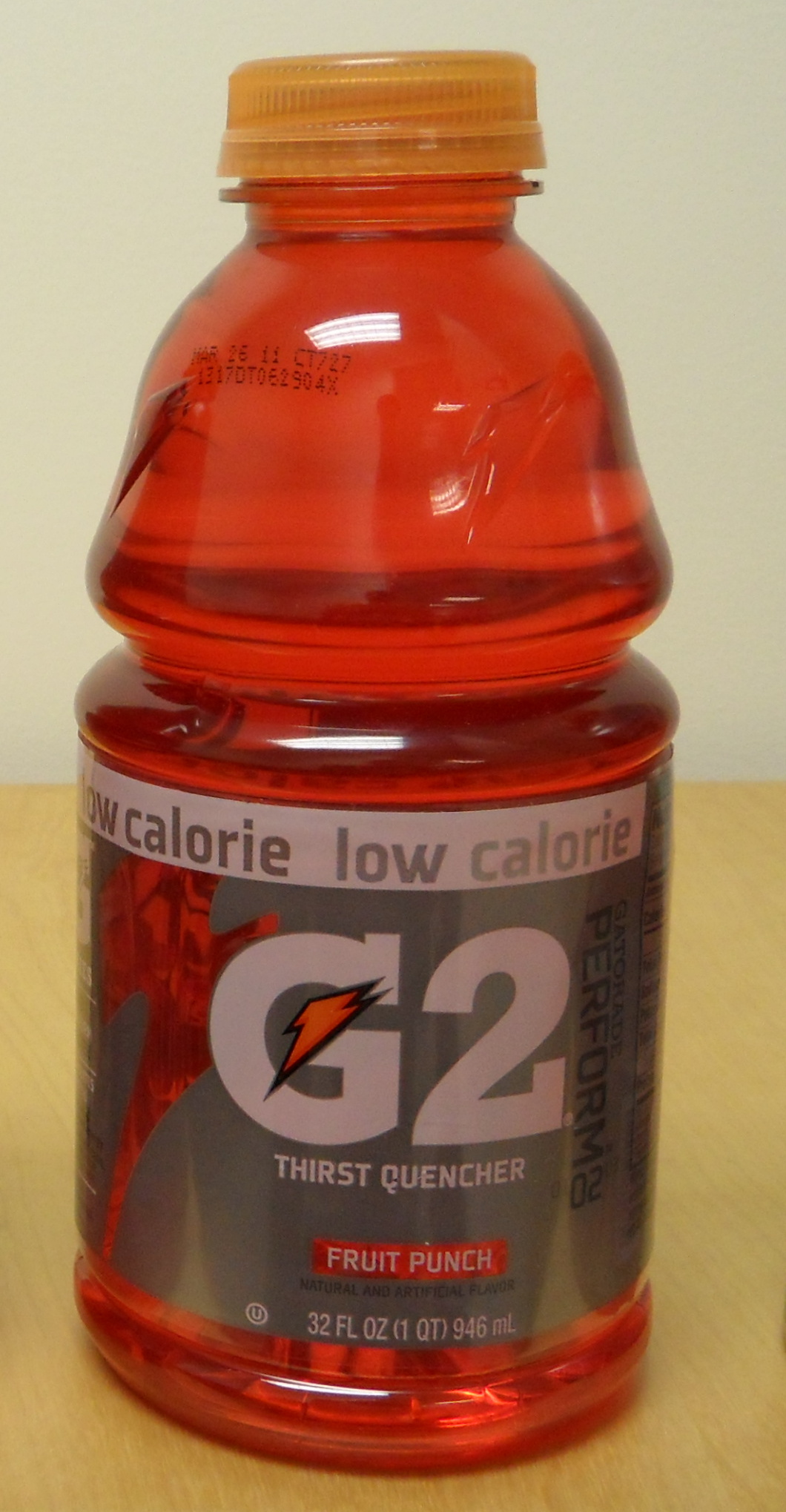
6. **Gatorade Zero**In an effort to appeal to health-conscious consumers wary of high sugar and calorie counts, Gatorade introduced Gatorade Zero, positioning it as a guilt-free alternative. A 20-ounce serving boasts a mere 10 calories and 3 grams of carbohydrates, primarily achieved through the use of stevia, a natural, calorie-free sweetener. On the surface, this appears to address the major criticisms leveled against traditional sports drinks, making it seem like a smart choice for those looking to avoid excess sugar. However, a deeper dive into its ingredient list reveals other artificial components that raise significant concerns.
Despite its “zero” branding, Gatorade Zero still incorporates artificial coloring and modified food starch. The fundamental principle of a genuinely healthy diet revolves around consuming foods and beverages that are as close to their natural state as possible. The presence of synthetic or “modified” ingredients inherently deviates from this principle. While “modified” does not always equate to genetically modified, it certainly indicates an alteration from natural food forms.
Modified food starch, an ingredient that has become increasingly pervasive across a wide array of food products, can be problematic for a notable segment of the population. Although some individuals may tolerate it without issue in small quantities, many others report experiencing adverse reactions. Online discussions, such as those found on Reddit threads, detail self-reported issues ranging from stomach pains to upper gastrointestinal distress.
While these are self-reported food sensitivities and would necessitate further rigorous scientific research to establish definitive cause-and-effect relationships, a healthy dose of common sense can be a valuable guide in avoiding potentially unhealthy products. If a drink’s ingredient list sounds more like a chemical formula than a natural food compound, it is often a strong indicator that it might not be the best choice for supporting optimal health and a clean hydration regimen.
Continuing our exploration into the hydration landscape, it’s clear that while the desire to refuel after a workout is commendable, many popular choices can inadvertently derail your health goals. We’ve dissected the first six offenders, but our critical examination isn’t over. Let’s delve into six more seemingly innocent beverages that registered dietitians advise you to reconsider for post-workout recovery. We’ll also unpack the pervasive dangers of artificial additives and highlight truly beneficial alternatives for optimal hydration.
Read more about: Are You That Driver? Unmasking the 12 Road Trip No-Nos That Annoy Passengers and Police Alike.

7. **Propel**Propel often presents itself as a more virtuous choice in the sports drink category, marketing itself as “fitness water” with a clear liquid appearance that suggests purity. Available in flavors like berry, kiwi strawberry, and peach, it’s advertised as sugar and calorie-free. This positioning leads many to believe it’s a superior hydration solution, a stark contrast to the brightly colored, sugar-laden traditional sports drinks.
However, Propel achieves its undeniable sweetness through the use of artificial sweeteners, specifically sucralose. While calorie-free, sucralose is far from benign, and its long-term effects are a growing area of scientific concern. Research, such as a study published in *Nature* involving mice, indicated that sucralose could diminish the body’s capacity to combat cancer and infections, essentially hindering immune cells from performing their vital functions.
Beyond immune health, the impact of sucralose on gut health is also significant. An article featured in *Frontiers in Nutrition* found a correlation between sustained sucralose consumption and undesirable alterations within the gut microbiome. Considering that a healthy gut is foundational to overall wellness, continuously introducing substances that disrupt this delicate balance warrants a cautious approach. It’s a clear reminder that “sugar-free” doesn’t automatically equate to “health-free.”
Therefore, despite its water-like appearance and claims of zero calories and sugar, Propel’s reliance on artificial sweeteners like sucralose raises substantial questions about its true health benefits, especially for routine post-workout hydration. Prioritizing genuine health means looking beyond surface-level claims and scrutinizing every ingredient.
Read more about: The Historian’s Toolkit: 14 Foundational Elements for Unearthing Any ‘Untold History’

8. **Vitaminwater**With a name like Vitaminwater and flavors marketed for “Essential,” “Energy,” and “Focus,” it’s easy to fall prey to the illusion of this beverage being a nutritious powerhouse. Indeed, it often boasts notable quantities of vitamins and minerals, including a range of B vitamins and vitamin C. This clever branding strategy successfully cultivates a perception of health-consciousness among consumers.
Yet, beneath the vitamin-rich facade, a deeper look reveals a significant amount of added sugar. A standard 20-ounce bottle of Vitaminwater contains 100 calories and a substantial 27 grams of sugar. To put this into perspective, while this is less than the 65 grams found in a 20-ounce Coca-Cola, it still amounts to approximately 6.5 teaspoons of sugar. This quantity is far from what would be considered a “nutritious” addition to anyone’s diet, as even the Coca-Cola company was prohibited from advertising Vitaminwater products as “nutritious” after a 2011 *Guardian* article highlighted these concerns.
Furthermore, for a drink aspiring to be a post-workout recovery aid, Vitaminwater largely misses a crucial component: sodium. Most of its flavors contain zero sodium, a key mineral profusely lost through sweat during physical activity. Without adequate sodium, it fails to meet the fundamental criteria of an effective rehydrating sports drink. The primary purpose of an electrolyte beverage is to replenish what the body expends.
Given the considerable amount of added sugar and its inadequacy in replenishing vital electrolytes like sodium, relying on Vitaminwater for post-workout recovery is a suboptimal choice. While it provides some vitamins, these can be more effectively and healthily obtained from a balanced diet, without the accompanying sugar load. It stands as a prime example of marketing brilliance overshadowing nutritional substance.
Read more about: Cha-Ching! These 7 Celebrity Endorsement Deals Blew Past $100 Million and Changed the Game!
9. **Gatorade Fast Twitch**Gatorade Fast Twitch enters the arena as an intriguing contender, designed to deliver a pre-workout or in-workout boost by substituting the traditional sugar rush with a significant dose of caffeine. Each 12-ounce bottle packs an impressive 200 mg of caffeine, a quantity roughly double that found in an 8-ounce cup of coffee, making it a powerful stimulant for those seeking enhanced performance.
While caffeine can certainly be a valuable tool for boosting physical performance in appropriate amounts, individual tolerance to its effects varies dramatically. For those sensitive to caffeine, or for anyone consuming multiple caffeinated products throughout the day, the 200 mg in Fast Twitch can easily lead to undesirable side effects such as heightened anxiety or a disrupted sleep cycle, especially if consumed later in the day. The Food & Drug Administration (FDA) generally considers 400 mg of caffeine daily safe for most healthy adults, but exceeding this threshold or combining it with other sources requires careful consideration.
Crucially, Gatorade Fast Twitch is entirely unsuitable for younger individuals. The FDA, while not setting a specific caffeine limit for children, strongly advises against caffeine consumption for anyone under the age of 18. Introducing such a potent stimulant to developing bodies can have unpredictable and potentially harmful consequences, underscoring the importance of age-appropriate beverage choices.
Although Fast Twitch deserves credit for utilizing vegetable coloring rather than synthetic dyes, it still falls short of a truly healthy profile by incorporating sucralose, an artificial sweetener. This choice detracts from its overall health appeal, despite its other improvements. Ultimately, while it may provide an energy surge, Gatorade Fast Twitch is far from an ideal or universally healthy post-workout choice, especially when considering its high caffeine content and artificial sweeteners.
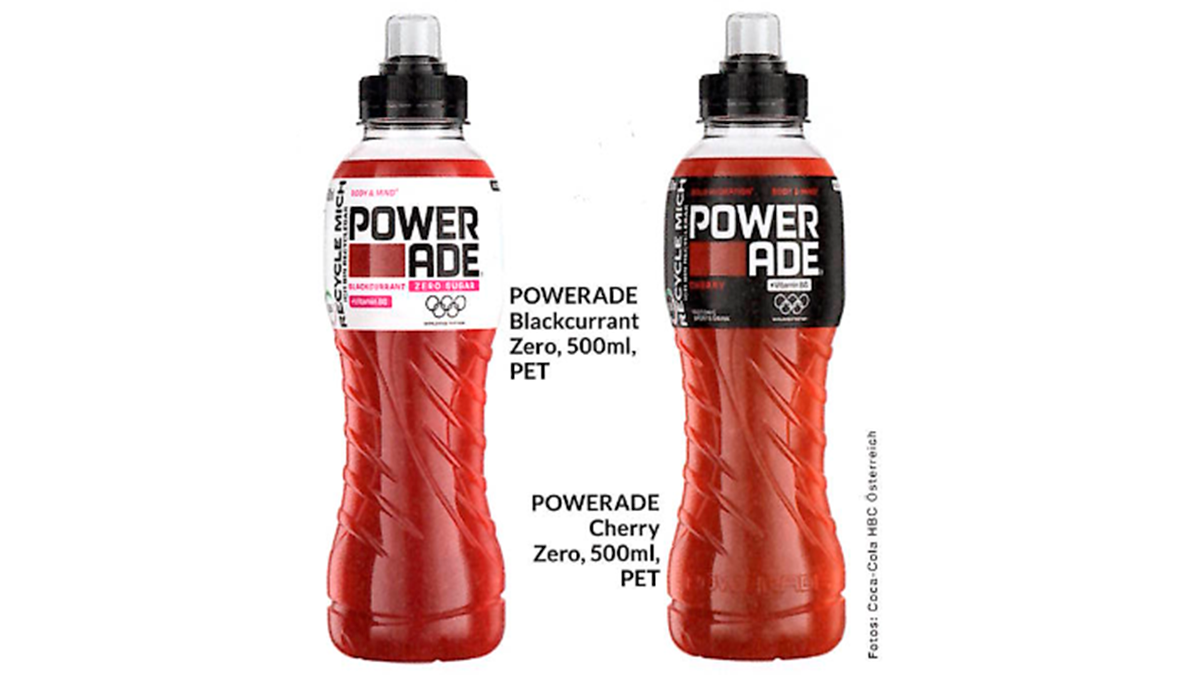
10. **Powerade Zero**Powerade Zero positions itself as the ultimate guilt-free hydration option, promising zero calories and boasting an array of flavors like Fruit Punch, Mixed Berry, Orange, and Grape. It highlights the inclusion of vitamins C and B12, alongside a claim of significantly more electrolytes than other leading sports brands. On the surface, this sugar-free, calorie-free status seems to address many of the concerns associated with traditional sports drinks.
However, Powerade Zero achieves its appealing taste without sugar through the use of artificial sweeteners, primarily sucralose. Furthermore, its vibrant colors are derived from artificial dyes, which are a major red flag for health-conscious consumers. For instance, the Fruit Punch and Grape varieties contain Red Dye 40, a chemical additive that *Healthline* reports has been linked to various adverse reactions, including allergies, migraines, and even symptoms of ADHD.
The Orange flavor of Powerade Zero is not exempt from these concerns, as it contains Yellow 5, also known as tartrazine. Research published in the *Journal of Pediatrics* has connected this specific chemical dye to mood disturbances, ranging from increased irritability to depressive symptoms. These findings collectively paint a troubling picture, indicating that aesthetic appeal often comes at a potential cost to neurological and immune health.
The general advice from health experts is clear: if an ingredient label lists a color followed by a number (e.g., Red 40, Yellow 5), it’s a strong indicator to avoid the product. These synthetic colorings offer no nutritional benefit and are solely for visual appeal, yet they carry well-documented risks. Powerade Zero, despite its calorie-free nature, underscores the importance of scrutinizing all ingredients, not just sugar content.
Read more about: Where Did They Go? 15 Beloved Snacks That Vanished From Supermarket Shelves – And The Delicious Memories They Left Behind

11. **Drip Drop**Drip Drop is marketed as a highly convenient and effective electrolyte drink mix, often praised for its travel-friendly packets and claims of delivering three times the electrolytes with half the sugar of leading sports drinks. Each stick provides 35 calories along with substantial amounts of essential minerals like sodium, potassium, magnesium, and zinc, making it seem like a robust hydration solution for those in need.
However, a closer look at the ingredient list reveals a notable concern: its flavor is artificially enhanced by a formidable quartet of sweeteners—sugar, fructose, dextrose, and sucralose. This combination represents a “quadruple whammy” of sweetening agents, and the presence of fructose is particularly problematic. Studies cited by *Healthline* suggest that fructose can be more detrimental to health than other forms of sugar, primarily due to its metabolic pathway.
Fructose is predominantly metabolized by the liver, and the increasing prevalence of fructose in processed foods places a chronic strain on this vital organ. This can lead to serious health issues, including fatty liver disease and type 2 diabetes, as detailed in *Diabetes, Metabolic Syndrome and Obesity: Targets and Therapy*. While an occasional Drip Drop packet might not pose an immediate threat, the cumulative effect of consuming fructose from various sources in a modern diet can amount to significant and damaging quantities over time.
Therefore, while Drip Drop offers a convenient electrolyte boost, its complex sweetener profile, especially the high fructose content, makes it less than ideal for regular consumption. Individuals seeking consistent electrolyte replenishment should be wary of products that rely on such a heavy combination of sugars and artificial sweeteners, particularly given the known metabolic risks associated with chronic fructose intake.
Read more about: Unleash the G-Forces: 12 Thrilling Sports Coupes That Redefine Speed and Humiliate Supercars – Have You Tamed Any?
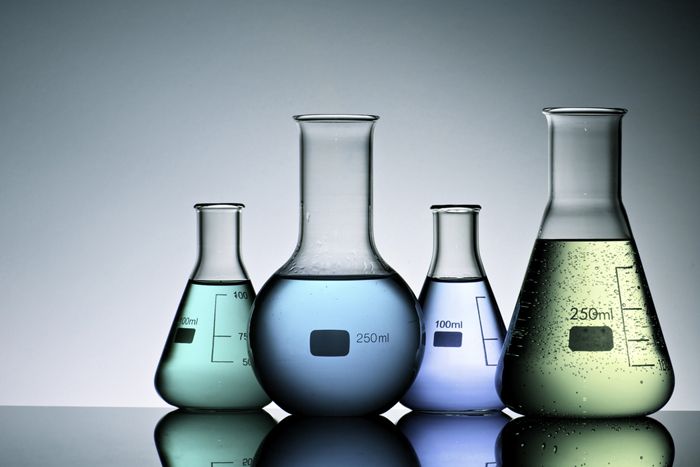
12. **Liquid I.V.**Liquid I.V. has rapidly gained popularity, lauded for its effectiveness in rehydrating after intense exercise, illness, or even a long night out. On many fronts, Liquid I.V. makes commendable strides compared to other sports drinks. It supplies significant amounts of crucial electrolytes like sodium and potassium, alongside beneficial vitamins such as C and various B vitamins. A single stick of its Lemon Lime Hydration Multiplier, for instance, contains a modest 45 calories.
However, these 45 calories are entirely derived from added sugar. While Liquid I.V.’s 11 grams of sugar per serving is considerably lower than the excessive amounts found in traditional Gatorade or Powerade, it is still a notable quantity of added sugar that cannot be overlooked. The product uses a blend of sweeteners, including stevia, dextrose, and pure cane sugar, to achieve its appealing taste profile.
While the immediate gratification of a sweet flavor is undeniable, a constant influx of sweet foods and beverages can have profound long-term consequences. As elucidated in *Neuroscience and Biobehavioral Reviews*, sugar actively stimulates the reward systems in our brains, triggering the release of feel-good hormones like dopamine. This creates a temporary high, but once these hormone levels decline, the brain signals a craving for more of whatever provided that initial rush.
This cycle can potentially foster sugar addiction, leading to an ongoing struggle with cravings and overconsumption. Therefore, despite its lower sugar content compared to some competitors and its inclusion of beneficial electrolytes and vitamins, Liquid I.V. still contributes to the pervasive issue of added sugar in our diets. For those concerned about managing sugar intake and avoiding potential addictive cycles, opting for a homemade sports drink with minimal or no added sweeteners remains the healthiest approach.
**The Dangers Lurking in Your Drink: Food Dyes and Artificial Sweeteners**
Beyond the individual drawbacks of specific drinks, a critical thread connecting many of these “unhealthiest” choices is the pervasive use of artificial additives. Food dyes and artificial sweeteners are included purely for aesthetic appeal or to mimic sweetness without calories, yet they come with a growing body of evidence highlighting their potential harms. Understanding these hidden dangers is crucial for making truly informed hydration decisions.
**Food Dyes:** Common in many sports drinks, food dyes like Red 40, Yellow 5, and Blue 1 are synthetic additives that provide absolutely no nutritional benefits. Their sole purpose is to make beverages more visually appealing, yet they have been linked to a range of health concerns, from behavioral changes in children to potential carcinogenic risks. These chemicals are far from inert.
For instance, Yellow 5 is specifically known to trigger allergic reactions in susceptible individuals, manifesting as skin rashes, hives, or even respiratory issues like asthma. More alarmingly, some animal studies, such as those involving Red 3, have indicated potential carcinogenic effects, linking it to thyroid tumors in rats. The long-term implications for human consumption, especially in combination with other dyes, warrant serious attention.
Beyond physical reactions, food dyes have shown concerning behavioral effects, particularly in children. Research suggests a link between the consumption of certain artificial colors and increased hyperactivity, especially in those with Attention Deficit Hyperactivity Disorder (ADHD). These dyes could also contribute to other behavioral changes, such as irritability and sleep disturbances, directly impacting children’s well-being and development.
Moreover, there are concerns regarding genotoxicity, where certain food dyes might damage genetic information within cells, leading to mutations that could potentially initiate cancer development. Neurotoxicity is another area under scrutiny, with ongoing research investigating the long-term impact of these dyes on the nervous system. The production and disposal of these synthetic dyes also pose environmental risks, contributing to pollution and ecological degradation, making them a concern beyond individual health.
**Artificial Sweeteners:** Substances such as aspartame, sucralose, and saccharin are frequently found in ‘diet’ or ‘zero’ versions of sports drinks, offering sweetness without the caloric load of sugar. While often marketed as a healthier alternative, these artificial sweeteners are not without their own set of potential issues, impacting everything from digestion to mood and even metabolism.
One frequently reported issue is digestive distress, including bloating, gas, or diarrhea, often attributed to the body’s difficulty in fully digesting certain sugar alcohols like sorbitol and mannitol, which can be found alongside artificial sweeteners. Headaches or migraines are another common complaint among sensitive individuals after consuming sweeteners like aspartame, highlighting their potential neurological impact.
Beyond immediate physical discomfort, artificial sweeteners can also influence blood sugar levels and insulin response, despite being calorie-free. This can be particularly problematic for individuals managing diabetes or prediabetes. There’s also emerging evidence suggesting that long-term use of artificial sweeteners might paradoxically contribute to weight gain by affecting hunger regulation and how sweet tastes are processed by the brain, potentially leading to increased cravings.
Moreover, some research indicates a negative impact on gut health, with artificial sweeteners potentially altering the delicate balance of gut microbiota. This disruption can have wide-ranging effects on overall health, including glucose intolerance. While regulatory bodies like the FDA currently deem them safe within limits, debates persist regarding the long-term safety and potential carcinogenic effects of some sweeteners, urging continued vigilance.
**3 Recommended Electrolyte Drinks with Clean Ingredients**
Navigating the world of electrolyte drinks can feel daunting, but armed with knowledge, you can make choices that truly support your health. The good news is there are excellent options available that prioritize clean ingredients and effective hydration without the harmful additives. These choices reflect a commitment to quality and transparency, aligning with what your body genuinely needs.
**Myoxcience Electrolyte Sticks**
For those seeking serious hydration without compromise, Myoxcience Electrolyte Sticks are an exemplary choice. These sticks are meticulously designed with high-quality ingredients, purposefully avoiding unnecessary sugars and artificial additives. They focus squarely on delivering the essential electrolytes your body requires, ensuring optimal replenishment without any unwanted extras.
**Redmond’s Re-Lyte**
Redmond’s Re-Lyte embodies a minimalist yet highly effective approach to electrolyte replenishment. It stands out by utilizing real salt and natural flavorings, steering clear of the flashy marketing and dubious additives that plague many competitors. It’s a straightforward, honest formula crafted for reliable and healthy hydration, making it a trustworthy option for daily use.
**LMNT**
LMNT has garnered significant praise among health-conscious consumers for its impeccably clean label and robust electrolyte balance. It contains no added sugars or harmful chemicals, offering a potent and effective solution for hydration. LMNT has become a go-to for those who prioritize a pure, unadulterated source of electrolytes, ensuring peak performance and well-being.
**Conclusion**
In a world saturated with marketing hype, making informed choices about what you drink for post-workout recovery is paramount to your overall health and performance. As we’ve seen, many popular sports drinks, despite their ubiquitous presence and alluring claims, harbor hidden dangers in the form of excessive sugars, artificial sweeteners, and synthetic dyes. These ingredients can actively undermine your efforts to stay healthy, impacting everything from your metabolism and gut health to your mood and long-term well-being.
Read more about: David Baltimore, Nobel-Winning Biologist Who Upended Dogma and Shaped Modern Science, Dies at 87
The experts agree: genuine hydration and electrolyte replenishment come from understanding labels, prioritizing clean, natural ingredients, and being wary of anything that sounds more like a chemical experiment than a healthful beverage. By opting for products like Myoxcience, Redmond’s Re-Lyte, or LMNT, or by choosing natural sources like coconut water and homemade solutions, you empower your body with what it truly needs to recover, thrive, and achieve its best. Hydrate wisely, nourish thoroughly, and let your body feel the difference of truly clean fuel.

